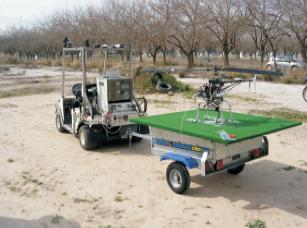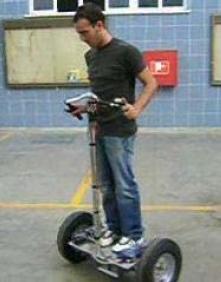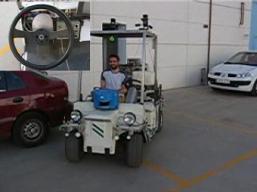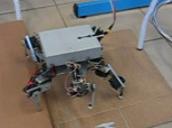Embedded WiSeNts
is a Coordination Action (CA) funded by the European Commission under
the Information Society Technology (IST) priority within the 6th
Framework Programme (FP6). The project addresses the strategic
objective of "Embedded Systems".
Embedded WiSeNts is a joint effort between twelve
partners from ten different European countries. These partners are
among the top research institutions in wireless communication and
distributed computing as well as in cooperating objects in general, and
are at the forefront of ubiquitous communication and wireless sensor
networks in particular.
We see the need to achieve three main goals, having
a short-term, middle-term, and long-term impact, respectively:
1. Supporting the integration of
existing research.
2. Road mapping for technology
adoption.
3. Promoting excellence in
teaching and training on systems of cooperating objects.
This three-pronged approach will allows us to best prepare
the European
research community for working towards the broad vision of cooperating
objects.
The main aim of
this project is the development of new methods and techniques that
allow the coordination among the aerial and ground mobile robots. It is
expected in this project to develop importance technologies for
applications such as inspection of installations, infrastructures
(bridges, dams), great buildings, detection and monitoring of
catastrophes (fires, floods, eruptions, earthquakes), exploration,
vigilance, citizen security and others. This project expects to
influence in the development of the aerial robotics. Moreover, it is
believed that this field will improve a lot in the next ten years with
a large number of applications.
CROMAT is a coordinated project divided in 3
Subprojects that share a work package to design and develop a control
architecture for the coordination of aerial and ground mobile robots.
The first
of these projects, directed by the GRVC research group of the
University of Seville, is dedicated to design and build an aerial
robotic platform based on a radio control helicopter and its
integration with a ground robot. The second one, directed by the
University of Malaga, is dedicated to the remote control and
cooperation among various robots. Finally, the third project is
directed by the University of Vigo and is dedicated to the study of
control techniques for autonomous helicopters.
|
Click on the image to see the
video
(5,09Mbytes)
|
This project has
been done during the PhD. courses of the program "Automation and
Robotics" of the Dept. Automation and Systems Engineering of the School
of Engineering of Seville, and consists in a prototype for transporting
people. This vehicle based its movement in the stabilization of an
inverted pendulum. The advance movement is provoked by the inclination
of the person with regard to the balance position. However, the
rotation movement is controlled by the person using a electric device.
The control of the vehicle is done by an on board microcontroller
supervised from a computer and both communicate between a wireless
link. This prototype has the aim to be used as a research platform for
control techniques.
|
Click on the image to see the
video (1,97Mbytes)
|
Projects during my
studies as undergraduate student:
- System of ultrasound sensors for
autonomous navigation (final project for technical degree evaluated as A with honors):
This project developed a parking
application without driver. Two controllers (an industrial PC and an
embedded controller based on a DSP) were programmed for the autonomous
vehicle ROMEO-4R to read and synchronize the proximity sensors based on
ultrasounds installed in the vehicle. Both controllers implemented a
parallel parking planned function with continuous curvature
(programming the entire application in fixed point in the embedded
controller). Results obtained from the 2 controllers were practically
the same.
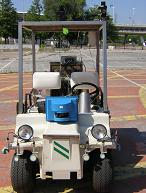 |
Click on the image to see
the
video (9,40Mbytes)
|
- Programming of a spider-robot
with six legs:
Successful programming of a
spider-robot to move in all directions and go up and down some steps.
The coordinates of each leg were computed using the inverse model of
each one. The climb and descent functions were controlled by
information received by the contact sensors, installed in each leg of
the robot.
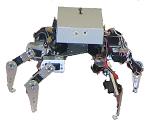 |
Click on the image to see
the video (4,71Mbytes)
|
-
“3
in a line” game with a robotic arm:
A robotic arm was programmed to play the game “3 in a line” against a
human player. With the help of a vision camera to apply image
perception techniques, the state of the board was known at every
moment. The next move was computed accordingly and finally the
necessary commands to execute it were sent to the robot.
